Walkie Talkie skyscraper's public garden opens amid criticism
- Published

London's highest roof garden has opened at the top of the capital's newest skyscraper, 20 Fenchurch Street - dubbed the Walkie-Talkie. But critics have said it is not the public park punters had expected it to be.
When is a garden not a garden?
When it's a "sky garden", according to critics of the space at the top of the latest addition to the City of London's skyline.
A public sky garden was the jewel in the crown of proposals for the 37-floor skyscraper, which were approved in 2007.
But after opening this week, critics have said the garden is "not a proper public space" at the top of "probably the ugliest building in London".
'Glorious drag queen'
The BBC has had its requests to preview the space repeatedly declined, but images released this week appear to show more grey space than green, while the Guardian's architectural critic Oliver Wainwright says: "It feels a lot like being in an airport terminal.", external
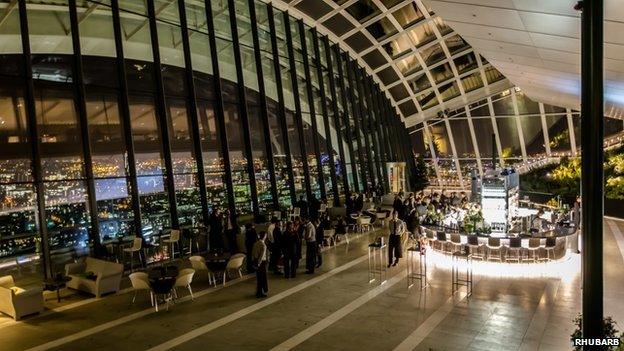
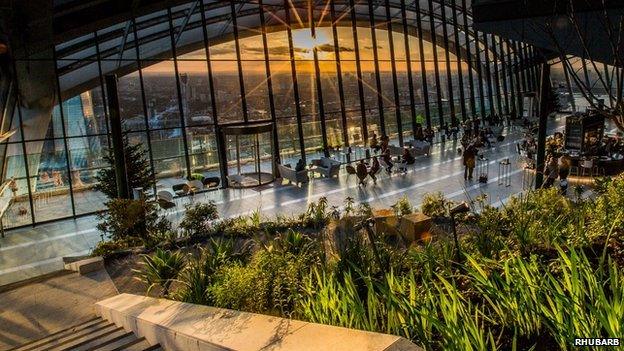
The building itself does, however, have its fans, with Tom Sleigh, councillor for the City of London's Bishopsgate ward calling it a "glorious drag queen of a building" with "shapely curves".
It is "bold and brash" and proof architecture can be "voluptuous and sexy", he says.
Land Securities and Canary Wharf Group, which developed the skyscraper, have yet to respond to the criticism.
The space is open during the daytime to the public if you book three days in advance, but after 18:00 only customers from one of the three restaurants or bars are able to visit.
Gardener Richard Reynolds, who is known as "the guerrilla gardener" and blogs about illicit cultivation across the capital, says: "Frankly this garden is yet another scandal."
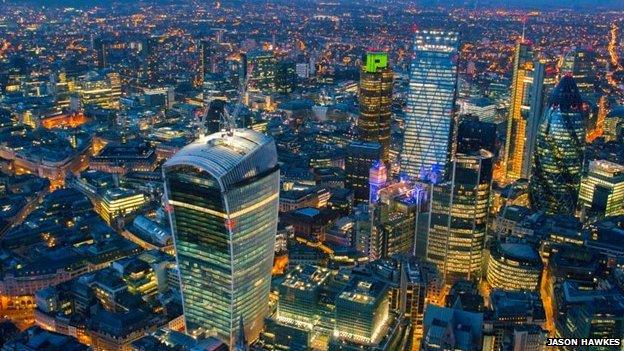
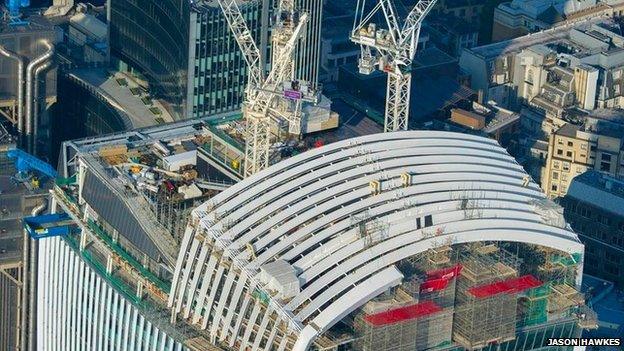
"It's not what we were promised, is it? This was meant to be a public place - a place which we could visit for free and the visualisations made it look amazing."
'Bulbous shape'
Even the City of London's former chief planner Peter Rees, who saw the building through its approval stages, says: "I think calling it a sky garden is perhaps misleading.
"If people expecting to visit it as an alternative to Kew, then they will be disappointed," he said.
"This was never designed as just a garden, but the public have free access to the top with wonderful views across London."
Meanwhile, as the building has gradually made its mark on the skyline, there has been much debate over its aesthetic appeal.
The Victorian Society's Christopher Costelloe says its "bulbous shape" makes it "probably the ugliest building in London which distracts from other listed buildings".
"Lots of people got excited about the public garden idea but it's not a real public garden - instead a private space you have to book to visit three days in advance," he adds.
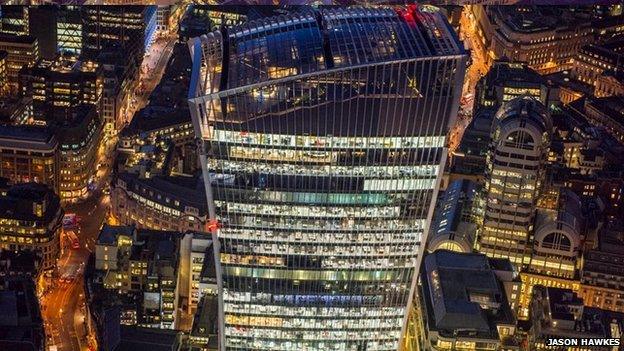
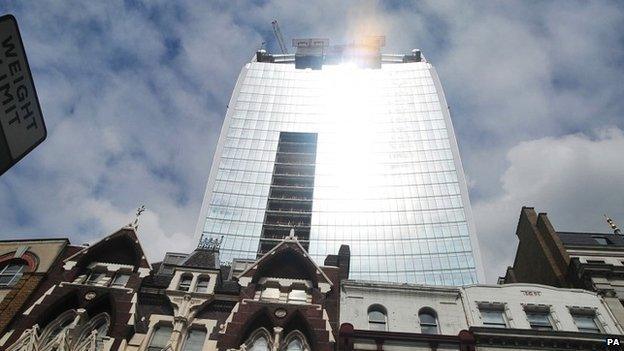
A permanent sunshade has been attached to the 37-storey building
He says it is an example of "what happens when bad planning decisions are taken".
"The problem seems to be calling it a garden is a subjective term," he says. "You can call anything a garden, but planning documents only go so far."
Independent councillor Mr Sleigh agrees: "A planning condition was that it would be a green park where people can congregate. If this is not delivered, then the developers should be held to account."
Meanwhile, there is another controversial green-finger friendly London landmark in the offing.
The River Thames Garden Bridge was approved by London Mayor Boris Johnson in December to a very mixed public response.
"London seems to be suffering from a lot of green garden hype at the moment," says Mr Reynolds.
Of course, this is not the first time the Walkie Talkie has been subject to controversy.
In 2013, the glare from the top of the building melted parked vehicles and damaged shops in the City of London - with the building being dubbed by much of the media as the Walkie Scortchie.
What the building's lasting legacy will be remains to be seen.
- Published17 July 2014
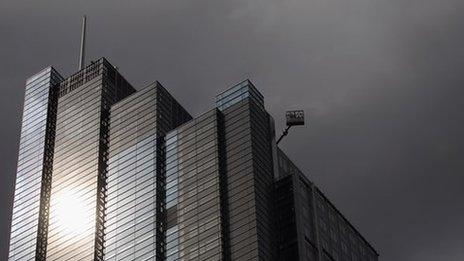
- Published25 December 2013
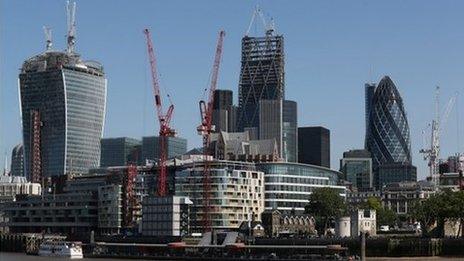
- Published3 September 2013
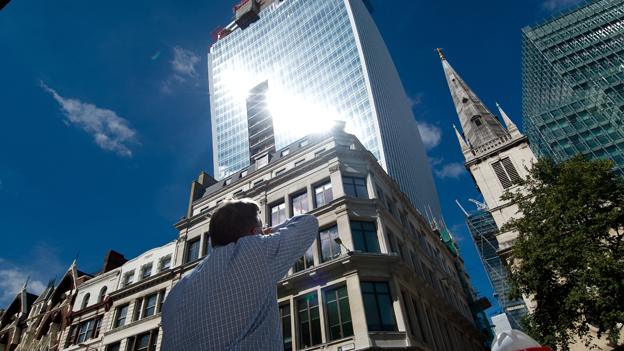
- Published2 September 2013
